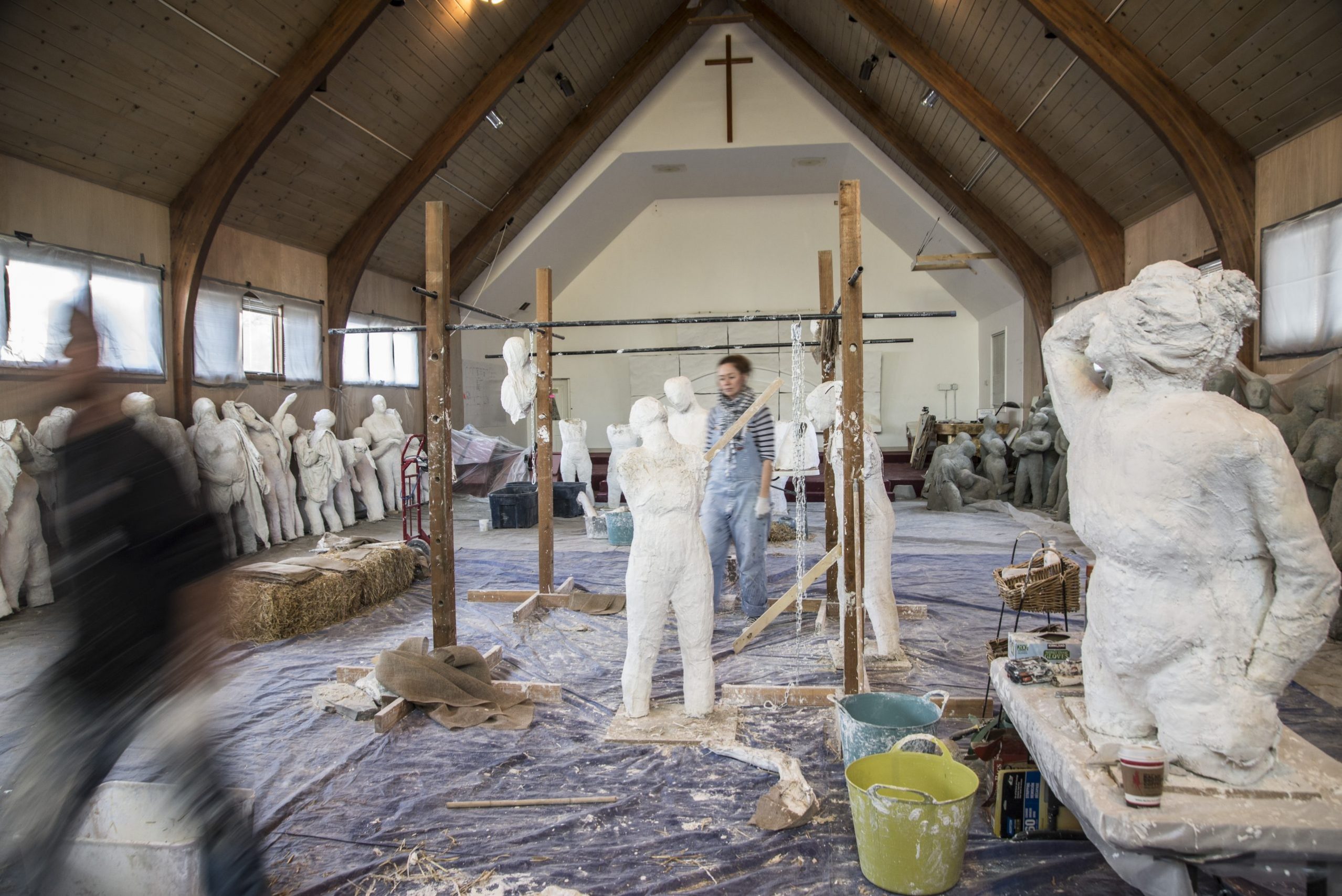
An artist works on a stone body casting in the former Church of Love site. Photo courtesy of Michael Conti
“Not every community is lucky enough to be anchored by a hospital or a waterfront. But every community has artists,” says Jamie Bennett, executive director of ArtPlace America. “It’s the one asset already present in every community.”
Jason Schupbach, director of design programs for the National Endowment for the Arts (NEA), agrees. “When you want to repress or take away freedoms in a society, the first thing you do is take away its culture,” he says. “It is a representation of people, and it matters to people. Every community has artists, has culture, and many artists have [the] capacity to help people think about a future and how it could be different.”
Artists have supported movements for social change and the building of healthy communities for thousands of years. But around the early part of this decade a few things happened that launched an intentional look at how arts and culture work could be harnessed for place-based goals. There was the formation of NEA’s Our Town program, the coining of the phrase “creative placemaking,” and the creation of ArtPlace, a 10-year funding collaborative focused on place-based arts and culture work.
What Can Arts Do for You?
Early in the first Obama administration, recalls Schupbach, Austan Goolsbee, head of the Council of Economic Advisers, pointed out that the Great Recession was different from previous recessions because the huge number of homeowners underwater on their mortgages meant people were not able to sell their homes and move to better economic conditions. “He asked all the agencies to think differently,” says Schupbach. “How can we help Americans where they already live? Because they can’t move.”
Out of that effort grew NEA’s Our Town program, which “invests in projects that contribute to the livability of communities and place the arts at their core.” Our Town grant applications require a partnership between a local government and an arts organization. “That was on purpose to grab the attention of local political folks and say ‘This matters,’” says Schupbach, who has managed the Our Town program since its inception in 2010. “The response was enormous and amazing. Mayors’ offices were saying, ‘Why are all these arts organizations calling us and wanting to work with us?’ and arts organizations were calling us to say, ‘How do we work with the government? We’ve never done this.’ There are lots of groups we didn’t fund who are now working together [because of this process].” Through 2015, Our Town had awarded over 325 grants, totaling $26 million.
Bennett, who was chief of staff and director of public affairs at the NEA from 2009 to 2014 before coming to ArtPlace, remembers that NEA Secretary Rocco Landesman told him he’d come into the position with a goal to double NEA’s budget, which would last about three days, he says. But then Landesman decided to tap into the new interest in interagency work.
“[Landesman] realized that in the nonprofit arts sector, every conversation began with what we didn’t have,” remembers Bennett. “We start in beggar’s stance. But that didn’t reflect lived experience. So he decided to stop asking what you can do for the arts and start asking what arts can do for you.”
The NEA went to various other agencies—from the U.S. Department of Housing and Urban Development to the departments of health and human services, transportation, and education—to talk about how the art world could support their goals. Initial conversations would go something like this, says Schupbach: “Hi, USDA, we have funding for arts in rural development.’ ‘You do that?’ ‘Yes we do!’” In most cases, he says, the relevant parties had never spoken before.
At the White House Office of Management and Budget, under former HUD Secretary Shaun Donovan, the Community Solutions Taskforce institutionalized these kinds of relationships in three ways: an interagency memorandum of agreement regarding cooperation, new staff positions in each agency for people who can interact with the public and connect them with relevant resources in all the agencies, and extensive training for staff on what other agencies do. The goal, says Schupbach, was to “reorient the people who sit there every day pushing money and doing [technical assistance].” At the NEA, this means, for example, that the folk arts staff now works with the Bureau of Indian Affairs.
NEA leaders also made a pitch to convince foundations and other private funders to co-invest with the agency on these place-based efforts. From that pitch, which Bennett calls “a rare example of innovation starting in federal government,” emerged ArtPlace America.
ArtPlace describes itself as a “collaboration among a number of foundations, federal agencies, and financial institutions that works to position arts and culture as a core sector of comprehensive community planning and development in order to help strengthen the social, physical, and economic fabric of communities.” It currently lists as partners 8 federal agencies, 15 foundations, and 6 financial institutions. Among the partners are the Ford, Rockefeller, Surdna, and Kresge foundations, and Bank of America, Citi, and Chase.
The collaborative started by putting project-based funding through its National Creative Placemaking Fund side by side with some research strategies. It created a grid of 10 community development sectors (such as food, health, housing, safety, transportation) and five types of players (civil/social/faith-based, commercial, government, nonprofit, and philanthropic), and has set itself to supporting work at every possible square on the grid. As of June 2016 it had allocated $67 million to 227 projects in 152 communities through its Creative Placemaking Fund and was expecting to commit another $10.5 million in a 2016 round of funding.
Field Building
Victor Rubin, vice president for research at PolicyLink, describes the NEA, ArtPlace, and the Kresge Foundation as three legs of a stool in a national movement to support arts in community development, supported by a range of partners including the Local Initiatives Support Corporation (LISC), PolicyLink, Transportation for America, Americans for the Arts, and the Trust for Public Land. Over the past couple of years, attention has turned to treating this movement as more than a collection of projects via field building.
In January 2015, ArtPlace launched its Community Development Investments (CDI) program. This was a very different approach from the project-based funding it had been providing. CDI grants were not for a specific arts project, but instead would be given to community development entities that had “interest but no experience” with arts and culture strategies, says Lyz Crane, ArtPlace’s deputy director. The grants would go toward enabling these organizations to figure out how to use arts and culture to support their work, how to work with artists and arts organizations, and how to craft a creative placemaking project idea. “We knew the creative placemaking idea was spreading, and people were interested, but didn’t know how to approach it,” says Crane.
The CDI program offered six organizations flexible funds of up to $3 million over three years to “allow them to learn and experiment,” says Crane. The grants came with active involvement from ArtPlace—technical assistance, customized webinars, and trips to other communities. CDI grantees spent the first year learning to think differently, doing “cultural asset mapping” in their communities, and developing partnerships. Only then did they propose a specific arts-related project to work on. “A lot of time CDCs don’t have the time [or] resources to sit down and have those conversations” about expanding into a new area or developing a new way of working, says Crane, especially not knowing whether they will then have the funding to be able to do a project. They hope the CDI program allows for those conversations and adaptations to happen—to the benefit of the whole field.
To that end, the journey of the CDI grantees is being closely documented by PolicyLink. (PolicyLink had first begun researching the arts and community development intersection through the Kresge Foundation.) “They are helping us to understand what is old hat to community development and what’s new,” says Crane.
NEA, too, after several years of Our Town, recognized the need to develop capacity within other fields to take on arts and culture projects. “Our Town was supporting great work, but the applications were coming in from the same places, for similar projects,” explains Frank Woodruff, executive director of the National Alliance of Community Economic Development Associations (NACEDA). To expand the breadth of where Our Town reached, NEA launched a series of Knowledge Building grants. “They wanted more CDCs to know about and understand creative placemaking,” says Woodruff. “They wanted to help create a system, an infrastructure, and to get the word out.”
NACEDA, as a membership organization of the state associations of CDCs, seemed well-poised to take this on, and it was awarded one of the knowledge building grants to re-grant to its members through the Creative Placemaking Immersion Program (CPIP). But before it actually gave out any money, NACEDA walked the talk of partnership by partnering with Americans for the Arts to craft the details of CPIP. “We started with relationship building, downloading what each organization does,” says Jeremy Brownlee, NACEDA’s membership director.
Learning to talk to each other and adjust to each other’s language and starting assumptions took some time. It took a while to convey to NACEDA’s arts partners just how uncomfortable creative uncertainty could be to people coming from a firm developer mindset, where precision was essential in putting together deals, Brownlee remembers. Meanwhile NACEDA discovered that the terms “creative placemaking” and “community design” were not used interchangeably (the former involves much more leadership from community members than the latter).
NACEDA learned so much from the exercise that it decided it wanted the members to whom it re-granted NEA funds through CPIP to replicate it in their state or local context. Therefore, CPIP applicants had to find an arts-based partner, go through this process of getting to understand each other’s work, and then propose back to NACEDA a knowledge-building project for its members.
The three projects NACEDA funded included a day-long event on the topic in Massachusetts, a series of gatherings focused on different types of geographies (urban/suburban/rural) in Ohio, and technical assistance and outreach in Philadelphia.
Terminology and Pushback
The term “creative placemaking” was coined in a 2010 white paper for the NEA written by Ann Markunsen and Anne Gadwa. The paper is largely devoted to making the case that investments in arts and culture projects focused on “animating” a specific place do in fact constitute economic development, and contribute to “livability, economic revitalization, creative entrepreneurship, and cultural industries.”
The term—and some of the work that has happened under its auspices—concerned many people, some taking it as the latest funder buzzword they were going to have to adapt to, or a more dangerous cover for outside-led projects that encourage gentrification over equitable development.
For example, Kenneth M. Reardon, reviewing for Shelterforce a report titled Place-Making in Legacy Cities: Opportunities and Good Practices, wrote “Several of the projects presented as good practices featured the use of public funds and zoning regulations to advance a public space improvement plan crafted by powerful business and institutional interests with little, if any, input from low-income communities of color directly affected by these projects.”
In a 2012 Next City article, Neeraj Mehta wrote, “Revitalizing an old building, turning it into a theater, and attracting new artists and audiences are all great outcomes. But if you can’t show me that a large percentage of these artists and audiences are from within the community, then I’m not so impressed.” Mehta suggested that to increase its focus on equity, ArtPlace should add “Who benefits?” to its list of criteria, and that Our Town should add a “for whom?” component to each of its goals.
The concern could extend back to that original white paper, in which the term “equity” only shows up once in a single paragraph, in a not very sympathetic section titled “Countering Community Skepticism.” “Art forms, organizations, and neighborhoods that feel left out may complain of inequity and oppose public support,” it warns.
The narrative of gentrification, in which the presence of artists, public art, and art scenes helps pave the way for an influx of new residents in a poor neighborhood, lurks underneath many of these concerns. It is one that people working in all of these places both take seriously and are a bit frustrated by.
“Successful creative placemaking projects are not measured by how many new arts centers, galleries, or cultural districts are built,” clarifies ArtPlace’s website. “Rather, their success is measured in the ways artists, formal and informal arts spaces, and creative interventions have contributed toward community outcomes.”
“It is reasonable to be critical of urban design strategies or creative placemaking strategies that are insensitive to broader economic and racial equity concerns,” says Rubin. “Earlier, and maybe even some current, projects might be guilty of that, but I feel like the tide is turning. All these groups [ArtPlace, NEA, Kresge Foundation] are being conscious of equity.”
And indeed, ArtPlace’s description of successful creative placemaking projects starts off sounding rather like a community organizing manual: “Define a community based in geography, such as a block, a neighborhood, a city, or a region; Articulate a change the group of people living and working in that community would like to see; Propose an arts-based intervention to help achieve that change.”
Rubin is adamant that arts-based strategies need not increase displacement risk if they are “done right.” Doing it right, he says, includes focusing on artists and culture bearers who are representative of the community in question. “Where outside expertise and talent is brought in,” he says, it has to be “in service of a community-driven agenda.” It also involves taking a broad view of arts and culture, “really mapping all the assets, not just the formal assets,” cultural humility and cultural competence on the part of artists, planners, or designers; a real commitment to inclusion and diversity; a real respect of local culture and vernacular; and fair allocation of public resources for arts and culture.
Finally, he says, avoid language that implies that the revitalization of communities is reliant on attracting new people. “There’s creative people everywhere.”
Jamie Bennett of ArtPlace suspects that that idea of a “creative class” that is separate and apart from existing residents of lower-income areas does a lot to drive suspicion about arts-related strategies.
There is a lot more to examine about that intersection, but when you get into the projects that are currently being funded by Our Town, ArtPlace, and others working in this space, such as the Kresge and Surdna foundations, you certainly find little talk of trying to attract a savior class of creatives with trendy art.
Instead, you find projects like New Hampshire Ave: This Is a Place To…, in which a dance company uses art to strengthen bonds and culture within Takoma Park, Maryland, a diverse community that has long been overshadowed and fragmented by a commuter arterial, and is now worried about displacement. Schupbach describes it [the project] as “using dance as a way to conduct community meetings.”
Or you find the Made in Opa-locka project of Opa-locka CDC in South Florida, which turned individual houses into public spaces in a community that lacked any, and supported existing small business with design services. (Or the many other projects we’ve been covering.)
As with so much about community development, the needs will be unique and the projects will vary from place to place. What’s important is figuring out how to have arts-related tools in the toolbox.
“Having an artist as part of the community development process . . . prevents planners of a community development project from taking cognitive shortcuts,” says Woodruff. “The nature of an artist is to create, do something that hasn’t been done before. That can be scary for community developers. Sometimes they want to maximize efficiency rather than something new that hasn’t been done before. Artists create a healthy tension between the known and the unknown.”

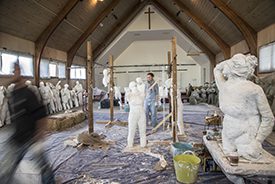

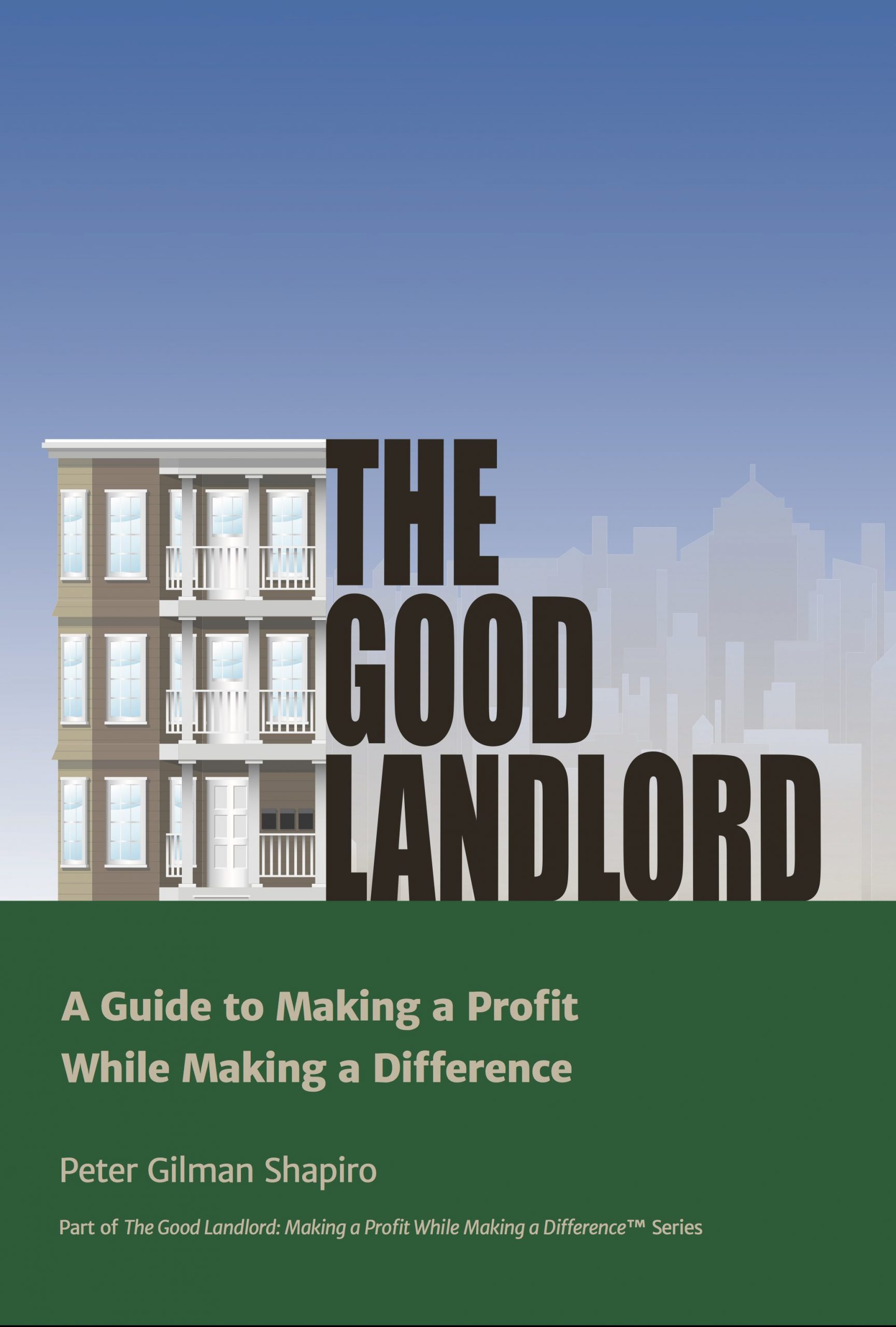
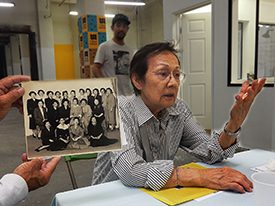
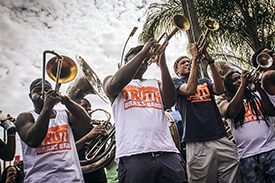
Want to learn more about bringing art back to a small rural community.
Gail (and others), here’s a rural placemaking opportunity: https://www.bcworkshop.org/posts/rural-placemaking-call.
Miriam, great article!